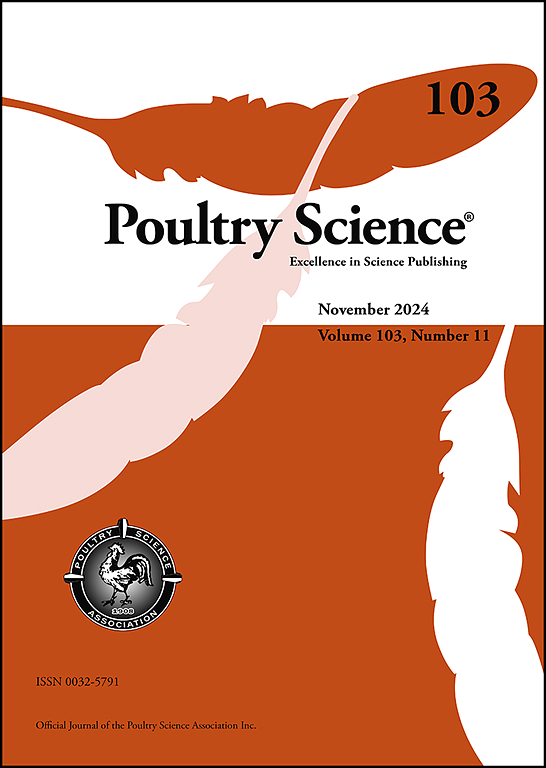How concerned should we be about broiler breeder fertility declines?
IF 3.8
1区 农林科学
Q1 AGRICULTURE, DAIRY & ANIMAL SCIENCE
引用次数: 0
Abstract
Broiler breeder fertility is the bedrock on which modern broiler production rests. Over the last decade, fertility and hatchability issues have emerged as key topics of interest for both breeders and producers. In this study, we took an analytical approach to interrogate declining fertility trends among U.S. broiler breeders from 2013 to 2022, leveraging data from the USDA National Agricultural Statistics Service (NASS). Despite an increase in the number of eggs set and broilers raised to meet the rising demand for poultry, projections indicate that hatchability rates could decrease to approximately 60 % by 2050 without corrective action. Our Markov Chain Monte Carlo (MCMC) analysis reveals significant declines in essential production metrics, including hatchability, chick livability, and production efficiency. The analysis also includes 95 % credible intervals that confirm a persistent downward trend across these parameters. We developed the Broiler Breeder Performance Index (BBPI) to deepen our understanding of these trends, utilizing both Gaussian and Cauchy models to evaluate predictive performance. The BBPI projections suggest a decline below baseline values over time, underscoring the urgent need for interventions to counteract the fertility crisis in the broiler industry. Several factors contribute to this decline, including management practices and genetic selection strategies. Effective flock management techniques, such as sex-separate feeding and careful weight monitoring, are vital for improving reproductive viability among broiler breeders. Our findings highlight the necessity of addressing these fertility issues to ensure the long-term sustainability of U.S. poultry production. As the global demand for poultry meat grows, the poultry industry faces significant challenges in maintaining productivity. By pinpointing the causes of fertility decline and implementing effective management strategies, stakeholders can better navigate the complexities of poultry production and contribute to food security. This study aims to draw attention to the urgency of addressing broiler breeder fertility issues. It encourages further research into solutions that can enhance reproductive performance across various genetic stocks in the industry.
求助全文
约1分钟内获得全文
求助全文
来源期刊

Poultry Science
农林科学-奶制品与动物科学
CiteScore
7.60
自引率
15.90%
发文量
0
审稿时长
94 days
期刊介绍:
First self-published in 1921, Poultry Science is an internationally renowned monthly journal, known as the authoritative source for a broad range of poultry information and high-caliber research. The journal plays a pivotal role in the dissemination of preeminent poultry-related knowledge across all disciplines. As of January 2020, Poultry Science will become an Open Access journal with no subscription charges, meaning authors who publish here can make their research immediately, permanently, and freely accessible worldwide while retaining copyright to their work. Papers submitted for publication after October 1, 2019 will be published as Open Access papers.
An international journal, Poultry Science publishes original papers, research notes, symposium papers, and reviews of basic science as applied to poultry. This authoritative source of poultry information is consistently ranked by ISI Impact Factor as one of the top 10 agriculture, dairy and animal science journals to deliver high-caliber research. Currently it is the highest-ranked (by Impact Factor and Eigenfactor) journal dedicated to publishing poultry research. Subject areas include breeding, genetics, education, production, management, environment, health, behavior, welfare, immunology, molecular biology, metabolism, nutrition, physiology, reproduction, processing, and products.
 求助内容:
求助内容: 应助结果提醒方式:
应助结果提醒方式:


